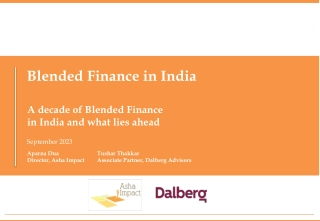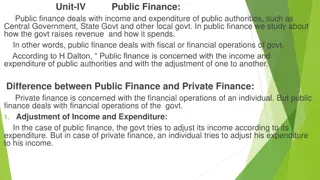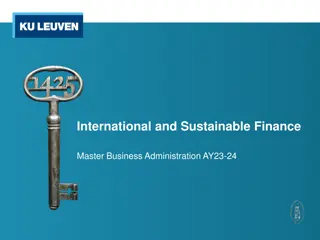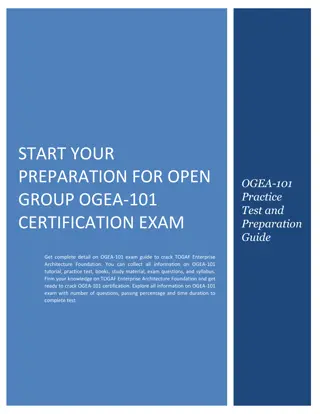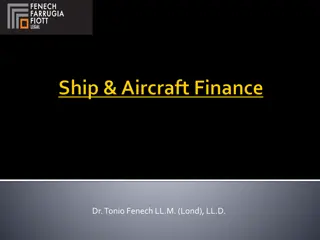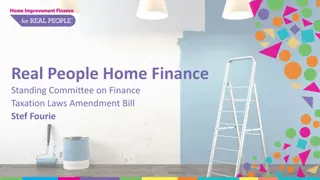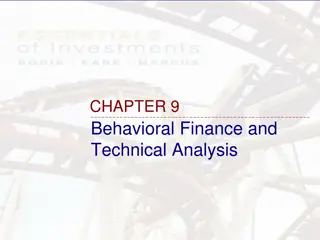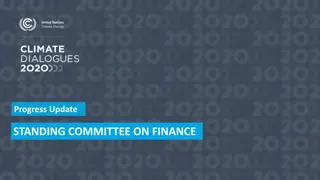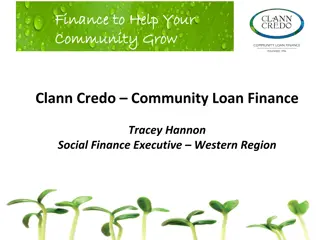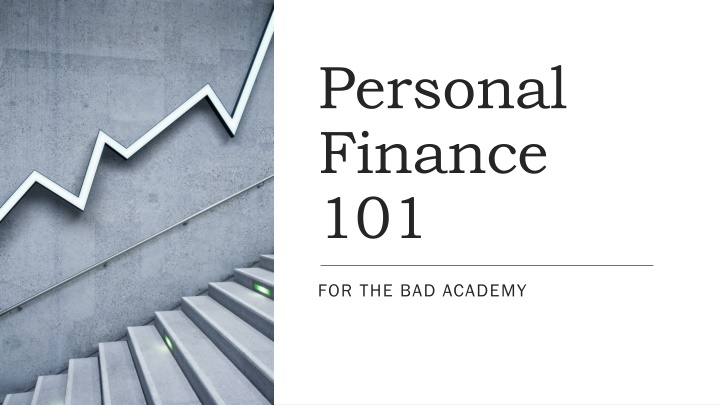
Steps to Building a Solid Financial Future: Personal Finance 101 Tips
Learn key steps for securing your financial future with Personal Finance 101 tips from the BAD Academy. Evaluate your current financial situation, set SMART financial goals, calculate your net worth, and monitor your spending to achieve financial success. Start making your money work for you today!
Download Presentation

Please find below an Image/Link to download the presentation.
The content on the website is provided AS IS for your information and personal use only. It may not be sold, licensed, or shared on other websites without obtaining consent from the author. If you encounter any issues during the download, it is possible that the publisher has removed the file from their server.
You are allowed to download the files provided on this website for personal or commercial use, subject to the condition that they are used lawfully. All files are the property of their respective owners.
The content on the website is provided AS IS for your information and personal use only. It may not be sold, licensed, or shared on other websites without obtaining consent from the author.
E N D
Presentation Transcript
Personal Finance 101 FOR THE BAD ACADEMY
Steps to building your (solid) financial future - Measure your current financial situation - Develop your financial goals - Measure your current spending i.e. inflows and outflows - Create a budget to help you achieve your goals >> HAVE MO MONEY!!! - Develop an investment plan >> Make your money work for you! PERSONAL FINANCE 101 - THE BAD ACADEMY
Calculate your baseline Purpose: take a snapshot of where you are today, which will be a tool to monitor progress How will we do this? We are going to calculate your NET WORTH NET WORTH = = ASSETS ASSETS - - LIABILITIES LIABILITIES PERSONAL FINANCE 101 - THE BAD ACADEMY
Net Worth Example Assets: Savings Account RRSP Account Car (current sale value) Total Assets Total Assets $27,146 $ 8,000 $ 5,500 $13,646 $27,146 Liabilities: Student Debt Credit Card Account Total Liabilities Total Liabilities $25,300 $23,000 $ 2,300 $25,300 Net Worth Net Worth $1,846 $1,846 PERSONAL FINANCE 101 - THE BAD ACADEMY
Setting your financial goals Make them SMART: S Specific what amount of money do you need, for what purpose M Measurable how can you meet this goal i.e. build into your budget so you can see whether you re on track A Achievable & R Relevant make sure you are being realistic and you understand the motivation behind why you ve chosen this goal. Having the motivation for it align with your values will lead to higher likelihood of success T Time-Bound set a realistic deadline and ensure you have a reminder to review You can set many simultaneous financial goals & they should all have a place in your budget PERSONAL FINANCE 101 - THE BAD ACADEMY
Monitor spending & achieve your goals A budget is a useful tool to help you assess where your money is coming from and where you are spending. By reviewing it over time and adjusting it you can change your spending habits which will eventually help you achieve those savings goals. Let s look at how you might use this tool: https://itools-ioutils.fcac-acfc.gc.ca/BP-PB/budget-planner PERSONAL FINANCE 101 - THE BAD ACADEMY
Youve got savings, now what? 1. Understand the investment account types (TFSA, RRSP, RESP, Taxable investments) 2. Put together your investment policy statement 3. Invest! 4. Monitor your investments and re-balance, if necessary KEEP CONTRIBUTING & KEEP MONITORING YOUR PROGRESS PERSONAL FINANCE 101 - THE BAD ACADEMY
Investment Account Types TFSA TFSA N RRSP RRSP Y RESP RESP N Need earned income to contribute Tax deductible contributions Tax free withdrawals Suitable for short-term savings goals N Y N Y Y (however some limits on withdrawal & re-contribution in same year) N N (except $35K can be used to buy 1st house) N N (only for education savings) Balance accumulates by an additional $5-6K per year (government states on Jan 1st) How much can you contribute each year? Lesser of: 18% of your annual income, or a $ limit set by the CRA Ideally, $2,500 per year for 10 years (maximum is $50K per RESP account) PERSONAL FINANCE 101 - THE BAD ACADEMY
Asset Mix By holding a mix of investments from the 3 main asset classes - cash, equities and fixed income investments you can get a fairly well-diversified portfolio. Deciding how much of your portfolio to invest in each asset class is called asset allocation. Your asset mix will largely determine the risk and expected return of your portfolio. To get the right mix for you, be sure that your asset mix matches your risk tolerance, financial goals and time horizon. https://www.vanguardcanada.ca/individual/etfs/about-our-asset-allocation- etfs.htm?cmpgn=PS0117CABAPDS0006 PERSONAL FINANCE 101 - THE BAD ACADEMY
Create your Investment Policy Statement Written document that should: Written document that should: - specify your investment goals and objectives - describe the strategies that will help you meet your objectives (account type, investment plan) - describe your return expectations and time horizon - include detailed information about how much risk you re willing to take - include guidelines on the types of investments that make up your portfolio, and how accessible your money needs to be - specify how your portfolio will be monitored, and when or why it should be rebalanced PERSONAL FINANCE 101 - THE BAD ACADEMY
The most effective way to do it is to do it. - AMELIA EARHART
Resources Tracking Net Worth Tracking Net Worth - Monthly tracker (add/delete rows as you like) https://retirehappy.ca/calculate-your-net-worth/ - Another option in google sheets https://docs.google.com/spreadsheets/u/1/d/1D3EO- Fz6oEpEmtzvp34LHUWPXtCxQn_ZzB0IJ8NXHzg/copy?usp=sharing Budgeting Tools Budgeting Tools - Budget Planner https://itools-ioutils.fcac-acfc.gc.ca/BP-PB/budget-planner - Budget and monthly spending planner in excel https://www.mymoneycoach.ca/budgeting/budgeting- calculators-tools/budgeting-spreadsheet - Detailed expense tracking and financial monitoring https://www.mint.com/canada PERSONAL FINANCE 101 - THE BAD ACADEMY
More Resources Investing Investing - Simple investing options through balances portfolio ETFs (low management fees) https://www.vanguardcanada.ca/individual/etfs/about-our-asset-allocation-etfs.htm - Investment tracking spreadsheets http://templatelab.com/investment-tracking- spreadsheets/#Investment_Tracking_Spreadsheets - Investment tracker in google sheets http://templatelab.com/investment-tracking- spreadsheets/#Investment_Tracking_Spreadsheets - - Investing terminology https://www.savvynewcanadians.com/investing-terms-everyone-should-know/ General General - Podcasts on financial literacy https://podcasts.apple.com/us/podcast/mastering-money-the-educators- edition/id1476545093 PERSONAL FINANCE 101 - THE BAD ACADEMY

